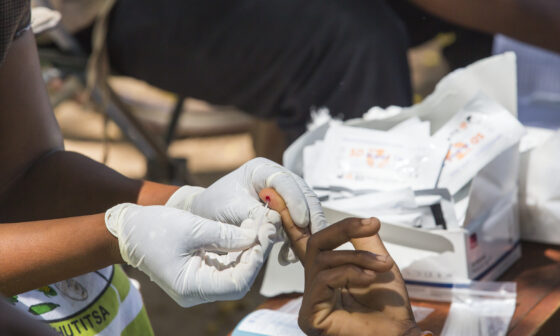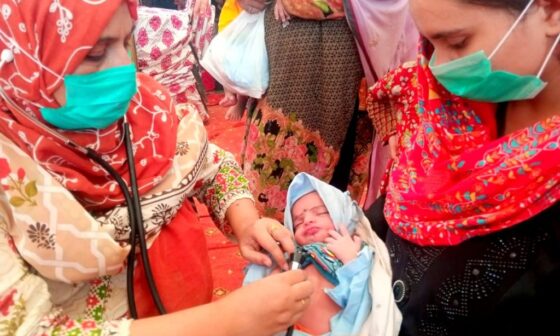Stroke is an increasingly common health issue in Pakistan, affecting thousands of individuals each year, many of whom are under the age of 50. As a leading cause of disability and death, strokes have become a public health concern that deserves urgent attention. A stroke occurs when the blood supply to the brain is interrupted, either due to a clot (ischemic stroke) or a burst blood vessel (hemorrhagic stroke). In Pakistan, the rising incidence of hypertension, diabetes, obesity, smoking, and sedentary lifestyles has contributed to a surge in stroke cases. Additionally, chronic stress, poor access to preventive healthcare, and low public awareness further exacerbate the problem. Despite the preventable nature of many strokes, delays in recognizing symptoms and accessing emergency care result in devastating outcomes for many patients. Addressing stroke in Pakistan requires not only improvements in healthcare infrastructure but also widespread education about early warning signs and stress management techniques.

Stroke – Risk Factors & Prevention – Burjeel
Consider the experience of 45-year-old Saima Ahmed, a school teacher in Karachi, who suffered a mild stroke while at work. She had been experiencing frequent headaches, fatigue, and occasional numbness in her left hand, but dismissed these as signs of exhaustion. One day, she suddenly lost the ability to speak clearly and had weakness in her left leg. A colleague recognized the signs of a stroke and rushed her to the hospital. Because she received care within the critical four-hour window, Saima recovered well with physical therapy and medication. Her story is one of the rare success cases, highlighting the importance of timely recognition and intervention. In contrast, 51-year-old Akhtar Mehmood, a taxi driver in Lahore, ignored symptoms like blurred vision and arm weakness for days. By the time he was taken to the hospital after collapsing at home, he had suffered extensive brain damage, resulting in partial paralysis. These contrasting stories emphasize the life-altering consequences of delayed response to stroke symptoms.

About Women and Stroke | Stroke | CDC
Recognizing the early symptoms of a stroke can significantly reduce long-term complications and mortality. The acronym FAST is often used to remember the warning signs: Face drooping, Arm weakness, Speech difficulty, and Time to call emergency services. Other symptoms may include sudden vision problems, loss of balance, severe headache, or confusion. In Pakistan, lack of public education about these signs means that many people wait too long before seeking medical help. Moreover, traditional remedies and reliance on unqualified practitioners in rural areas can further delay critical treatment. Raising awareness through community health programs, media campaigns, and educational materials in local languages is crucial. Schools, mosques, and workplaces can be effective platforms for disseminating this life-saving knowledge. Involving family physicians and community health workers in stroke prevention education could also bridge the awareness gap, especially among high-risk populations.

Stroke Risk Factors | Greater Chicago Food Depository
Stress plays a major role in increasing the risk of stroke, especially in urban centers like Lahore, Karachi, and Islamabad, where fast-paced lifestyles and financial pressures contribute to mental strain. Chronic stress elevates blood pressure, increases blood sugar, and contributes to unhealthy habits like overeating, smoking, and alcohol use. Over time, these factors damage blood vessels and make the body more susceptible to strokes. Mental health is often overlooked in Pakistan, with many dismissing anxiety and depression as personal weaknesses rather than medical conditions. Stress reduction strategies such as mindfulness, yoga, physical exercise, religious practices, and time management can significantly lower stroke risk. Government and private health providers should promote these practices by offering community workshops and stress screening programs. Integrating mental health services into primary care settings would ensure early detection and management of psychological factors contributing to stroke.
Preventing strokes involves a multifaceted approach that includes lifestyle modifications, regular health checkups, and improved access to emergency care. A heart-healthy diet low in salt, sugar, and saturated fats can help manage blood pressure and cholesterol levels. Physical activity, such as walking or swimming for at least 30 minutes a day, improves cardiovascular health and reduces stress. Regular monitoring of blood pressure, blood sugar, and lipid levels is essential for those with risk factors. Smoking cessation programs and alcohol reduction campaigns are also vital components of prevention. Pakistan’s healthcare system must expand stroke units in hospitals, improve ambulance response times, and train more neurologists and stroke specialists. In rural regions, mobile health units and telemedicine can make diagnosis and management more accessible. Employers should implement workplace wellness initiatives, including stress counseling and blood pressure monitoring, to protect their workforce from stroke risk.

50 Safety Topics and Messages for Work [+Safety Calendar]
Saima Ahmed’s recovery story serves as a powerful reminder that stroke does not have to mean permanent disability or death—if addressed swiftly and correctly. Akhtar Mehmood’s case, however, reflects the tragic reality faced by many who lack knowledge and access to prompt care. As stroke risk rises in Pakistan, it is essential to act decisively by promoting awareness, encouraging regular health screenings, and integrating mental health into general wellness efforts. A national stroke prevention strategy should be launched, combining public health education with healthcare system reforms. Collaborations between NGOs, government agencies, and local communities can amplify efforts to reduce stroke incidence and improve outcomes. Through proactive education, timely intervention, and stress reduction, Pakistan can turn the tide against this preventable crisis and protect its citizens from the devastating effects of stroke.

National stroke awareness day | Stroke Risk Calculator from National Stroke Association
References:
Pakistan Institute of Medical Sciences (2023). “Emergency Response and Stroke Care Challenges.”
Pakistan Stroke Society (2023). National Stroke Registry Report.
World Health Organization (2023). Noncommunicable Diseases Country Profile: Pakistan.
Journal of Pakistan Medical Association (2022). “Stroke Burden and Prevention in Urban and Rural Areas.”
Shifa International Hospital (2023). Stroke Rehabilitation and Recovery Programs.
Aga Khan University (2023). “Mental Health and Stroke Risk: An Overlooked Link.”
Dawn News (2022). “Recognizing Stroke: Why Early Detection Saves Lives.”
The Express Tribune (2023). “Stress in Urban Pakistan: Implications for Cardiovascular Health.”






